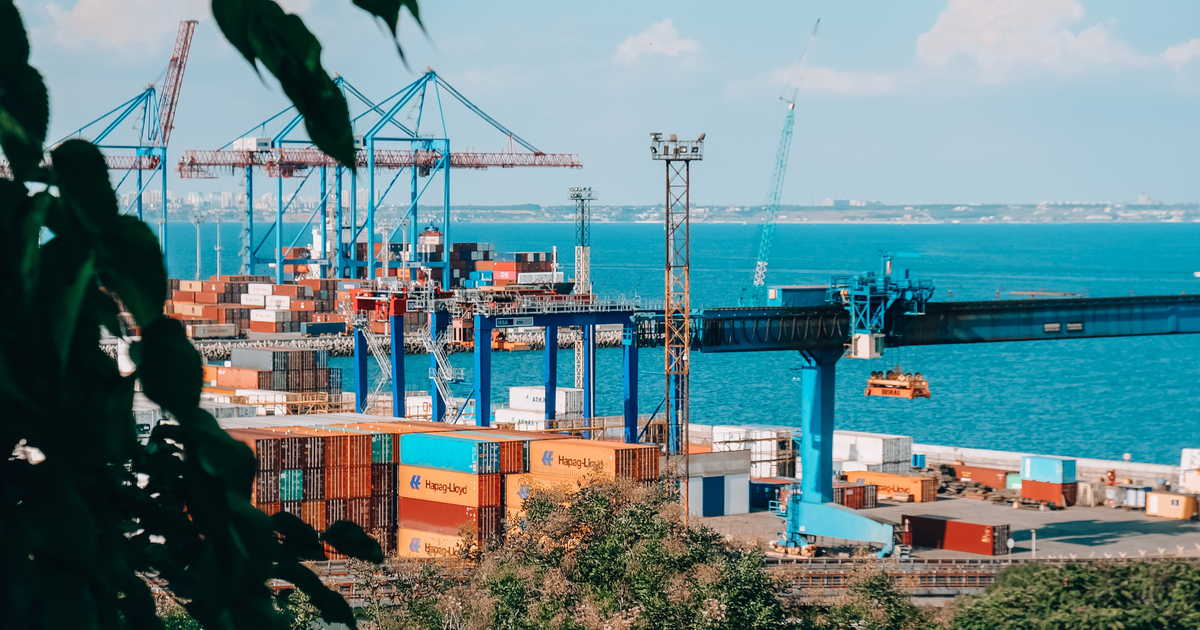
Posts Global Market sea transportation 2621 27 March 2024
Steady demand was observed on the Western Australia-China route, which transports iron ore
On March 25, 2024, the overall Baltic Dry Index (BDI), which takes into account rates for Capesize, Panamax and Supramax vessels, fell to a three-week low of 2123 points, down 73 points, or 3.3%, from the previous session, Hellenic Shipping News reports.
The drop was the fifth consecutive session, driven by weakness in the Capesize and Panamax segments.
The Capesize index, which tracks 150,000 dwt of iron ore and coal cargoes, lost 187 points, or 5.4%, from the previous session, falling to 3,295, the lowest level since February 27. The average daily earnings for vessels of this class, as of March 25, decreased by $1150, to $27.32 thousand.
The Panamax index, which tracks coal and grain cargoes of 60,000 to 70,000 tons, fell by 45 points, or 2.1%, to 2,120 points as of March 25. The average daily earnings for vessels of this class decreased by $401 to $19,082 thousand.
On March 15, the overall Baltic Dry index was 2374 points, and on March 1 it was 2203 points, the highest since December 19.
At the end of last week (March 22), according to S&P Global, Capesize freight rates were largely stable amid little trading activity. They were supported by steady demand for tonnage on the Western Australia-China iron ore transportation route. Demand from other regions was weak. According to one industry source, the Brazil-China and Atlantic routes were generally inactive.
The middle of March (March 11-15), according to the Baltic Exchange, started positively for Capesize, especially in the Pacific region, where rates rose slightly. However, later in the week, the index tended to decline. The pressure on this market increased due to the growth of tonnage and the shortage of coal cargoes. At the end of this period, activity also increased in the Atlantic. According to brokers, a major player entered the market by chartering several vessels from South Brazil to China for the first half of April. In general, the week was turbulent, with freight rates for Capesize vessels changing daily.
In the period of March 4-8, the Capesize market saw a change in sentiment. In the Pacific region, the week started actively, as large mining companies contributed to the increase in quotations. Later, there was a noticeable deterioration in market sentiment, but at the end of the week the situation changed under the influence of positive dynamics in the FFA market (forward freight contracts) and increased activity in both basins (Atlantic and Pacific).
Forecasts
In its latest forecast for the first quarter of 2024, Maritime Strategies International (MSI) expects a positive year for trade growth in the dry bulk sector, supported by signs of general improvement in economic activity in developed countries. At the same time, the forward order book for new buildings and delivery schedules remain relatively subdued for all ship sizes, Splash 24/7 reports.
MSI expects that the recent steady improvement seen in developed economies is likely to continue in the coming quarters. This will be facilitated by the expected easing of monetary policy in the coming months, given the sharp slowdown in inflation in various countries. Forecasts for bulk trade growth in 2024 are based on these factors. Despite the problems in China’s real estate sector, which is a significant driver of steel demand in the country, MSI notes an improvement in steel production fundamentals in the rest of the world.
Overall, the consultancy expects another year of relatively high growth in total bulk trade. In 2024, its volumes will grow by about 133 million tons (or 2.6% y/y), albeit at a slightly slower pace than previously forecast.
The last quarter of 2023 demonstrated that problems affecting fleet efficiency can still have a significant impact on the freight markets. In particular, we are talking about changing the routes of ships from the Red Sea and the Suez Canal due to Houthi attacks. MSI continues to believe that prolonged disruptions in the efficient use of the fleet could absorb significant tonnage and affect the near-term market outlook.
The impact of these factors on freight rates has been noticeable over the past few months. In particular, Capesize in 2024 has so far performed significantly better than typical seasonal fluctuations. Average monthly rates for the first eleven weeks of this year have almost tripled compared to the same period in 2023.
Crisis in the Red Sea
Russian and Chinese carriers that still regularly ply the Red Sea, as well as Western shipping companies, still consider this route too dangerous.
In particular, last week, Maersk reported that the risks of transiting the Red Sea remain too high for its crews and vessels. According to the company’s update on its operations in the region, both internal analysis and information obtained from external sources still indicate that the risk level remains high.
«The route through the Cape of Good Hope and around Africa is the most sensible solution at the moment and the one that currently provides the best supply chain stability,» Maersk said.
However, Bloomberg notes that Yemeni Houthis recently assured China and Russia that they would not attack their ships passing through the Red Sea and the Gulf of Aden (the parties did not comment on this statement). However, on March 24, they fired a missile at the Chinese-owned oil tanker M/V Huang Pu, causing a small fire, with no casualties. Lars Jensen, a shipping analyst and founder of Vespucci Maritime, suggested that it could have been a case of mistaken identity.
Earlier, on March 6, the Houthis attacked the True Confidence vessel, which was carrying more than 42,000 tons of steel from Tianjin (China) to Jeddah (Saudi Arabia). This was the first attack on a vessel exporting steel from China. In addition, it was the first time such an attack resulted in the death of people (three crew members were killed). However, Chinese traders have not expressed any desire to stop shipping steel via this route.
According to the latest Baltic and International Maritime Council (BIMCO) market report, in the first three weeks of March 2024, the number of ships transiting the Suez Canal decreased by 51% compared to the same period last year, and gross tonnage decreased by 63%. Voyages via alternative routes lead to cargo delays, supply constraints, higher freight rates and higher voyage costs.




